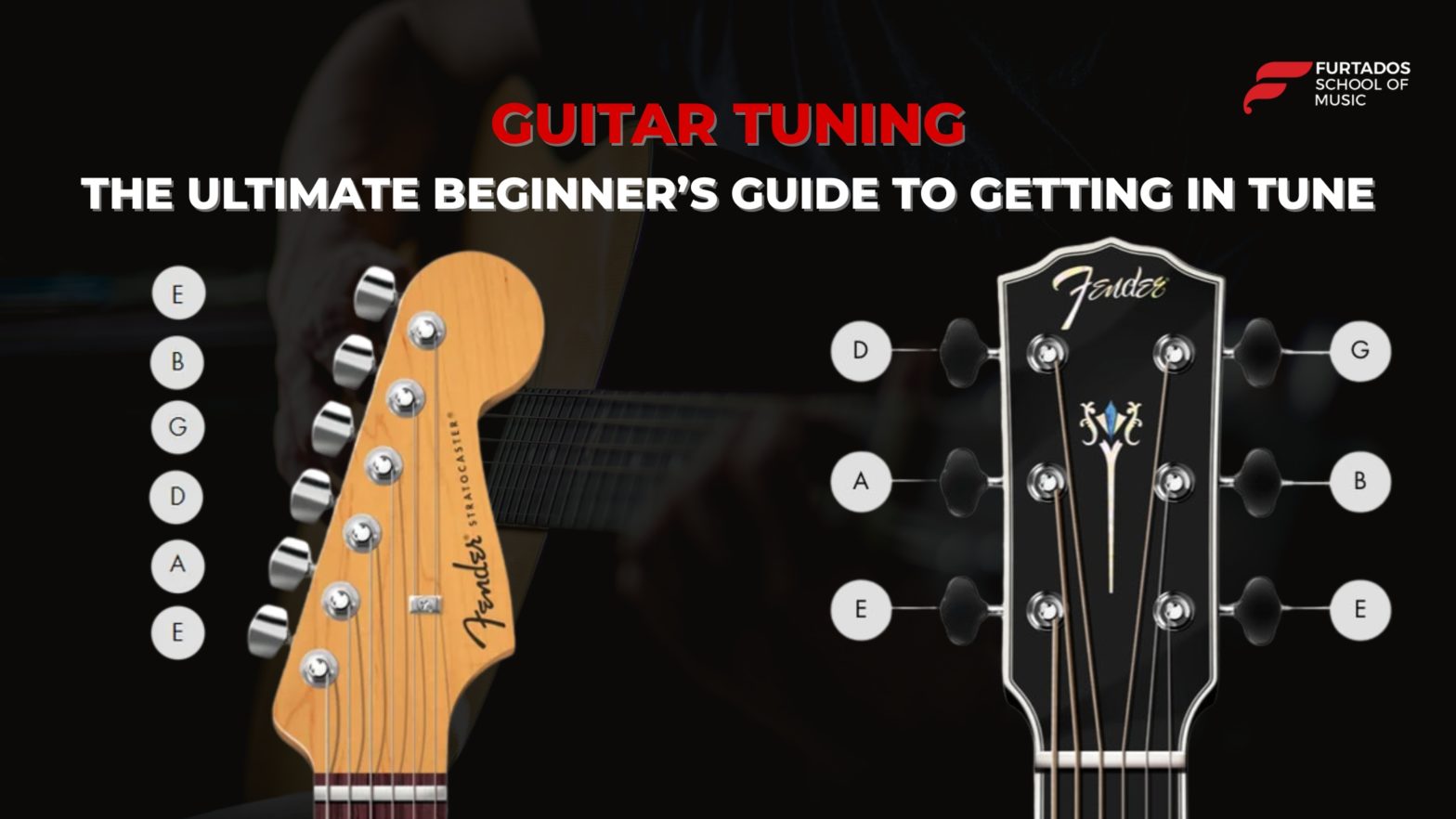So you’ve finally got your hands on your first guitar—congratulations! But the moment you strum it, something sounds… off? Don’t worry, you’re not alone. Learning how to tune a guitar is one of the most important first steps for any beginner. A beautifully played song on an out-of-tune guitar can still sound terrible, while even basic chords shine when your instrument is perfectly tuned. At Furtados School of Music (FSM), we guide every new guitarist to begin not with riffs or chords—but with tuning. Because guitar tuning isn’t just a technical step; it’s the key to developing your ear, your confidence, and your overall musicality.
Let’s dive into this ultimate beginner’s guide to tuning a guitar—made simple, friendly, and foolproof.
Why Guitar Tuning Matters
A guitar can go out of tune due to many reasons—changes in weather, new strings settling, or just regular playing. No matter how good you are, if your guitar isn’t in tune, it won’t sound right. For beginners, this can be especially discouraging. That’s why mastering guitar tuning methods early on will keep you motivated and your music sounding sweet.
The Standard Tuning
Most guitars follow what’s called standard tuning, where each open string (from thickest to thinnest) is tuned to the following notes:
- 6th string – E (lowest)
- 5th string – A
- 4th string – D
- 3rd string – G
- 2nd string – B
- 1st string – E (highest)
This sequence—EADGBE—is the tuning used in most songs, lessons, and practice routines.
Different Ways to Tune a Guitar
There isn’t just one way to tune your instrument. Let’s explore the most popular guitar tuning methods used by beginners and pros alike.
1. Using a Digital or Clip-On Tuner
This is the most beginner-friendly method. A digital tuner senses the pitch of each string and tells you whether to tighten or loosen it.
- Clip it onto the headstock, pluck the string, and adjust until the screen turns green or shows you’re “in tune.”
- Super accurate, fast, and recommended for all beginners.
FSM instructors always recommend starting with a clip-on tuner to build accuracy early on.
2. Tuning Apps
Smartphone apps like Fender Tune, GuitarTuna, or Yousician work similarly to physical tuners. They’re handy, affordable, and easy to use.
- Simply open the app, pluck a string, and follow the app’s feedback.
- Ideal for learners who may not have a physical tuner yet.
3. Tuning by Ear (Relative Tuning)
Once you’ve tuned one string (usually the low E), you can tune the other strings based on it. This method takes some practice and is great for developing musical ear.
- It uses the “5th fret method” where you compare the sound of one string to the next.
- Not ideal for absolute beginners but great to learn over time.
4. Using Harmonics (Advanced Method)
This is a more refined ear-tuning method using natural harmonics found on the 5th and 7th frets. It’s mostly used by intermediate to advanced players to ensure extreme accuracy.
Beginner Guitar Tuning Tips
Now that you know how to tune a guitar, here are some must-know beginner guitar tuning tips to make the process smoother:
- Always tune up rather than down. If your note is sharp, first loosen it slightly, then tighten to reach the correct pitch.
- Check tuning often, especially before and after practice sessions.
- Tune with clean, clear plucks. Don’t hit the string too hard or too softly.
- New strings stretch! Tune them a few times as they settle.
- Avoid tuning too fast. Slow, steady turns help you feel how the string responds.
- Environment matters. Cold or humid weather can affect your guitar’s tuning stability.
Common Mistakes Beginners Make
Even with the best tuner, beginners often slip up. Avoid these:
- Tuning the wrong string: Double-check you’re adjusting the right peg for the string you plucked.
- Over-tightening: This can snap a string or damage the tuning peg. If you’re unsure, go slow.
- Ignoring tuning completely: Playing with poor tuning will hinder your ear development and musical progress.
At FSM, every guitar student is taught to tune confidently from Day 1—because it builds independence and deepens their relationship with the instrument.
Take It Further with FSM’s Guitar Programs
Mastering how to tune a guitar is just the beginning of a fulfilling musical journey. At Furtados School of Music, we offer beginner-friendly guitar courses—both online and offline—designed to help learners build strong fundamentals. From holding your guitar right to playing your first song, our expert instructors guide you every step of the way.
With structured lessons, personalized attention, and real-time feedback, FSM’s guitar curriculum ensures that you learn not just how to play, but how to play well.
Final Note
Tuning may seem small, but it’s one of the most powerful skills you’ll develop as a guitarist. It sharpens your ear, connects you to your instrument, and ensures your progress sounds as good as it feels.
So take a deep breath, grab your tuner, and start your session right—by getting in tune.
